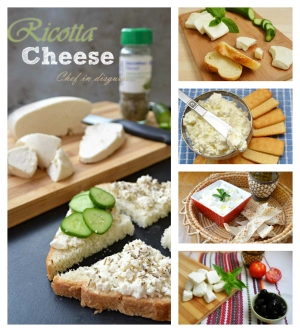
Blog-checking lines: Our Daring Bakers Host for December 2011 was Jessica of My Recipe Project and she showed us how fun it is to create Sour Dough bread in our own kitchens! She provided us with Sour Dough recipes from Bread Matters by AndrewWhitley as well as delicious recipes to use our Sour Dough bread in from Tonia George’s Things on Toast and Canteen’s Great British Food!
Can You believe I forgot the reveal date? That is how crazy things have been around here lately. We shifted from me being sick to the kids being sick to a crazy week at work and I lost track of time! I couldn’t believe my eyes when I looked at the calender this morning..Oh my GOD! I totally forgot about the reveal!
I made 3 loaves, two french country bread using the challenge recipe and one no knead bread using a recipe I found through foodgawker. The french country bread was dense and flavorful but it was really demanding to make. I found the no knead bread easier and it provided better crumb.
The second part of our challenge was to use up the sourdough we have made.I cut the french country loaf into slices and served it with olive oil and zaatar when it was hot out of the oven and it was really good. Dense and rustic and really full of flavor.The no knead bread I cut into slices and served with banana chocolate cardamom jam and some strawberry and kiwi slices.
Jessica thank you so so much for one of the most interesting and challenging months on the daring bakers

Sourdough to put it simply is bread made the way people used to make it before the age of pakaged yeast. It is basically a process of mixing water and flour to form a starter that you then feed to culture the natural yeast that is in the flour, that yeast once active and alive provides the rise for your bread or a variety of baked goods.The more your read about sourdough the more you see the science behind it all. The recipe Jessica provided and many others ask for starting with whole grain rye or wheat flour and the reason behind that is the fact that when you use whole grain rye or wheat flour, the flour is covered with a LOT of microorganisms. We’re interested in two of them, yeast and lactobacillus bacteria. When we mix flour and water, and keep adding more flour and water we are encouraging the critters that we want to take over the starter. By creating a hospitable environment, the critters we want will inevitably take over the culture. However,there will still be unwanted microorganisms. As long as you keep the conditions in your starter favorable, the unwanted critters will be kept under control. But, if you stop treating the starter right the unwanted critters can take over. So starting a starter is something that requires dedication and patience.
I was surprised to find out that there are bakeries that have starters that are hundreds of years old. Many of my fellow daring bakers have starters that are years old, starters they have fed and taken care of for years and they even give them names. A fact that may seem crazy at first but when you made a starter and watch it “come to life” you kind of understand. Strange as it may seem, taking care of a starter is kind of like taking care of a child, you have to feed it and watch over it and you keep questioning yourself if you are doing the right thing for it!
Jessica provided some great notes that were really helpful that you can find here and here are a few notes I found through various sites. Sourdough home in particular was very helpful
Maintaining your starter
Feeding
Each feeding should be equal amounts of water and flour, by weight. You can use about 2 parts of water to 3 parts of flour by volume as an approximation.
Each feeding of the starter should be enough to double its size but if you keep doubling the size of your starter, in 10 days you’ll have enough to fill a swimming pool. And 12 hours later, you’ll have enough to fill two swimming pools. So, before you feed the starter, take half of your starter and set it aside. You may discard it, or you may save it for other projects like making biscuits, pancakes, cakes, pizza shells. But even throwing it away is less wasteful than continuing to double the size of your starter
Temperature
Remember, people have been making sourdough since long before temperature control was as easy as it is today. So, it might be important, but it’s not the end of the world. In broad terms, you want to stay within the 65 to 85F range (18 to 30C). If you get much below that range, things will take far too long to happen. Above that range, you get into off tastes and organisms dying off.
Storing your starter
when can you optimally refrigerate a starter? The starter should be at least 30 days old, having been fed twice a day the entire time. It should be able to make bread you like – why store a starter that isn’t working for you? A starter you get from a vendor, friend or other source is already more than 30 days old, the 30 days just refers to starters you have started. Next, the starter should be able to double it’s size between feedings. If it’s not healthy, it’s not a good idea to refrigerate it. And finally, the best time to refrigerate the starter is when it is freshly fed. So, feed your starter until it will double in size between feedings, feed it one more time and then refrigerate it.

French Country Bread
Servings: 1 large loaf plus extra wheat starter for further baking
Wheat Starter – Day 1:
Ingredients
4 1/2 tablespoons (70 ml) (40 gm/1 ½ oz) stoneground breadmaking whole-wheat or graham flour
3 tablespoons (45 ml) water
Total scant ½ cup (115 ml) (3 oz/85 gm)
Directions:
1. In a Tupperware or plastic container, mix the flour and water into a paste.
2. Set the lid on top gently, cover with a plastic bag, to prevent messes in case it grows more than expected!
3. Set somewhere warm (around 86 F if possible). I sometimes put mine on a windowsill near a radiator, but even if it’s not that warm, you’ll still get a starter going – it might just take longer.
Wheat Starter – Day 2:
Ingredients
4 1/2 tablespoons (70 ml) (40 gm/1 ½ oz) stoneground breadmaking whole-wheat or graham flour
3 tablespoons (45 ml) water
scant 1/2 cup (115 ml) (3 oz/85 gm) starter from Day 1
Total scant cup (230 ml) (6 oz/170 gm)
Directions:
1. Stir the flour and water into the mixture from Day 1, cover, and return to its warm place.
Wheat Starter – Day 3:
Ingredients
4 1/2 tablespoons (70 ml) (40 gm/1 ½ oz) stoneground breadmaking whole-wheat or graham flour
4 teaspoons (20 ml) water
scant 1 cup (230 ml) (6 oz/170 gm) starter from Day 2
Total 1⅓ cup (320 ml) (230 gm/8-1/10 oz)
Directions:
1. Stir the flour and water into the mixture from Day 2, cover, and return to its warm place.
Wheat Starter – Day 4:
Ingredients
3/4 cup plus 1½ tablespoons (205 ml) (120 gm/4 ¼ oz) unbleached all-purpose flour
1/2 cup less 4 teaspoons (100 ml) water
1⅓ cup (320 ml) (230 gm/8 oz) starter from Day 3
Total scant 2⅔ cup (625 ml) (440 gm/15½ oz)
Directions:
1. Stir the flour and water into the mixture from Day 3, cover, and return to its warm place. At this point it should be bubbling and smell yeasty. If not, repeat this process for a further day or so until it is!
French Country Bread
Stage 1: Refreshing the leaven
Ingredients
1 cup less 1 tablespoon (225 ml) (160 gm/5 ⅔ oz) wheat Leaven Starter
6 tablespoons less 1 teaspoon (85 ml) (50 gm/1¾ oz) stoneground bread making whole-wheat or graham flour
1 cup plus 2 teaspoons (250 ml) (150 gm/5 ⅓ oz) unbleached all purpose flour
1/2 cup (120 ml) water
Production Leaven Total 2¾ cups plus 4 teaspoons (680 ml) (480 gm /1 lb 1 oz)
Directions:
1. Mix everything into a sloppy dough. It may be fairly stiff at this stage. Cover and set aside for 4 hours, until bubbling and expanded slightly.

French Country Bread
Stage 2: Making the final dough
Ingredients
3/4 cup less 1 teaspoon (175 ml) (100 gm/3 ½ oz) stoneground breadmaking whole-wheat or graham flour, plus more for dusting
2 cups plus 2 tablespoons (510 ml) (300gm/10 ½ oz) unbleached all-purpose flour
1¼ teaspoons (7½ ml) (7 gm/¼ oz) sea salt or ⅔ teaspoon (3⅓ ml) (3 gm/⅛ oz) table salt
1 ¼ cups (300 ml) water
1 ¾ cups (425 ml) (300 gm/10 ½ oz) production leaven – this should leave some (1 cup) for your next loaf.
Total 6 cups less 2 tablespoons 1415 ml (1007 gm/35 ½ oz/2 lb 3½ oz)
Directions:
1. Mix the dough with all the ingredients except the production leaven. It will be a soft dough.
2. Knead on an UNFLOURED surface for about 8-10 minutes, getting the tips of your fingers wet if you need to. You can use dough scrapers to stretch and fold the dough at this stage, or air knead if you prefer. Basically, you want to stretch the dough and fold it over itself repeatedly until you have a smoother, more elastic dough.
See my demonstration here: http://www.youtube.com/watch?v=OqS3raEGdwk
3. Smooth your dough into a circle, then scoop your production leaven into the centre. You want to fold the edges of the dough up to incorporate the leaven, but this might be a messy process. Knead for a couple minutes until the leaven is fully incorporated in the dough. See my demonstration here: http://www.youtube.com/watch?v=UPO97R4iO4U
4. Spread some water on a clean bit of your work surface and lay the dough on top. Cover with an upturned bowl, lining the rim of the bowl with a bit of water. Leave for an hour, so that the gluten can develop and the yeasts can begin to aerate the dough.
5. Once your dough has rested, you can begin to stretch and fold it. Using wet hands and a dough scraper, stretch the dough away from you as far as you can without breaking it and fold it back in on itself. Repeat this in each direction, to the right, towards you, and to the left. This will help create a more ‘vertical’ dough, ready for proofing. See my demonstration here: http://www.youtube.com/watch?v=rDoJRCMfclE
6. Heavily flour a banneton/proofing basket with whole wheat flour and rest your dough, seam side up, in the basket. Put the basket in a large plastic bag, inflate it, and seal it. Set aside somewhere warm for 3-5 hours, or until it has expanded a fair bit. It is ready to bake when the dough responds to a gently poke by slowly pressing back to shape.
7. Preheat the oven to hot 425°F/220°C/gas mark 7. Line a baking sheet with parchment, then carefully invert the dough onto the sheet. I like to put the baking sheet on top of the basket, then gently flip it over so as to disturb the dough as little as possible. Make 2-3 cuts on top of the loaf and bake for 40-50 minutes, reducing the temperature to moderately hot 400°F/200°C/gas mark 6 after 10 minutes.
8. Cool on a cooling rack
For the third attempt I used a recipe for no knead bread I found here
Ingredients:
(250g )8,81 oz all purpose flour
(250 g)8,81 oz bread flour
(275 ml)1 cup + 2 tbs warm water
(50 g) 1,76 oz sourdough starter
2 teaspoons salt
Method
Stir sourdough in a part of water. Put the flour in a bowl, add the leaven mixture, almost all water and stir using a fork.
Add salt.
Transfere the dough on a pastry board, add the remaining water and work to form a smooth ball. Put it into a bowl. Cover with a plastic wrap and let rise at room temperature until doubled in volume (this should take 12-18 hours depending on your starter).
Transfere the dough on a floured pastry board, roll with your hand gently and fold and overlap the two top laps, then roll.
Generously coat a cotton towel with flour, put dough seam side up on towel and dust with more flour. Put in a mold box , cover with another cotton towel, and let rise for 30 minutes.
Then, heat the oven to maximum temperature. Turn dough over into a baking sheet covered with paper. Cut the surface of the bread as you prefer and put in the oven. Bring the temperature to 390-425°F and bake 45 minutes about until loaf is browned. Let cool on a rack.



















